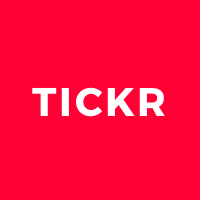4 Ways Analytics Can Protect the Health of Your Client’s Brand
In order to best serve their clients in the current media climate, agencies need to embrace analytics and utilize them to develop a higher level of skills and capabilities.
For PR agencies, there is a huge global trend underway toward utilizing analytics platforms to provide a higher level of data-driven decision making as an integral aspect of client service. Global brands increasingly demand and expect their agencies to keep them abreast of how audiences are perceiving their brand.
And yet, at many agencies, the process of tracking and reporting metrics for clients is still often perceived as a laborious chore. Traditional methods of collating and formatting metrics across multiple channels is a time-consuming process, and results are usually out of date by the time they are presented.
At Tickr, we’ve implemented an Emerging Risk Index (ERI) that tracks risk factors for global brands by tracking mentions of specific topics across all news, blogs, reviews and social media. We do this in a way that enables agencies to see cross-client metrics in real-time, from one unified interface.
The ERI allows agencies to transcend traditional reporting and cultivate a new set of forward-looking super powers, based on multi-source brand health metrics and analytics:
1. Predictive intelligence. This enables you to see around the corner, to determine what might be looming ahead. We used to talk about a 24-hour news cycle, but in actual fact, a lot of damage can happen within just a few hours. As the news cycle becomes more and more compressed, it becomes increasingly critical to monitor trending topics in real-time. It’s not enough to just scan for news coverage that has already been published – in order to predict if something is going to occur, you need to monitor topics associated with a brand name on a continual basis, to accurately predict pending events and crises. This is where advanced media analytics platforms come in.
As a hypothetical example, take the brand name of a pharmaceutical drug. At any given time, there are a number of topics associated with that brand name – e.g. “side effects,” “quality,” “dangerous,” “symptoms,” etc. Those associations are being incubated on a continual basis, and are usually benign. But a sudden change in the frequency of mentions might spark a crisis by providing an opportunity for people to retweet, repost, or speak out against the brand. This is how communications crises are triggered.
2. Proactive decision-making. Get out there and take action before something happens. In a media environment that is moving at warp speed, agencies need to make decisions proactively, rather than merely cleaning up the damage after it has already occurred. As another example, let’s say an industry analyst posts something negative about your client’s brand. If you spot the post quickly enough, you and engage the source and potentially avert a crisis. If not, you will learn about it later, after the comment has already made its way through multiple channels and audiences. An advanced media analytics platform can do the heavy lifting, freeing the agency team to strategize and execute.
3. Prescriptive acumen . Once you’ve detected a problem, you need to be able to recommend action(s) to be taken. If a legitimate crisis has already hit, it’s still possible to take prescriptive action. If, for example, your client is experiencing a product recall, the first thing to do is assess the client’s outbound messaging across paid, earned, owned and shared media channels to make sure that it is appropriate in light of the context and not inadvertently fanning the flames. Next, develop counter-messaging that can help to put the situation in context: “Here’s another way to look at it…” Finally, identify and engage advocates in the center of the issue, to enlist their help in shaping the story. Advanced media Analytics can help with each of these steps.
4. Holistic vision. Look beyond your client’s brand and see the entire competitive landscape and the marketspace in which they live. Finally, none of these superpowers are possible if you don’t maintain a broad, holistic view of what’s happening in your client’s market space. Before a crisis hits, it’s imperative to establish a baseline – what’s normal for the brand, in terms of volume, topicality, tonality, and depth? Once you’ve established a baseline, sudden spikes or anomalies can be easily discerned. For example, a large consumer brand might want to track topics related to data breaches, product quality and consumer sentiment.
With today’s compressed news cycles, agencies need to get beyond the habit of reporting what’s already in the rear-view mirror. Each of these examples illustrate how analytic capabilities can empower the agency teams to do their jobs better by protecting the health of their clients’ brands.
Are you ready to develop a higher level of superpowers for your clients through Advanced Media Analytics? Contact Tickr for a demo today.
